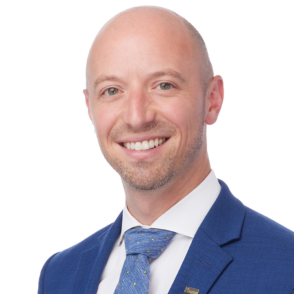Construction-related risks and Construction Insurance solutions were among the topics addressed in a webinar hosted by Burns & Wilcox and Burns & Wilcox Brokerage.
As construction activity picks up across the U.S. and Canada after a challenging 2020, general contractors and other professionals in the industry are navigating changes in the Construction Insurance marketplace. In fact, construction is one of the most important and rapidly changing areas of insurance, said Chris Zoidis, Executive Vice President, Burns & Wilcox—host of the webinar.
“Overall, the market is good,” said Nicholas Freeman, Associate Managing Director, Broker, Casualty, Burns & Wilcox Brokerage, Dallas, Texas. “Some of the states most impacted by COVID-19 are starting to pick up, and areas that were less impacted are picking up even more.”
In the Midwest, specifically, new work on bridges, dams, wind farms and other heavy infrastructure has been driving increased construction activity, said Steve Bartell, Senior Broker, Casualty, Burns & Wilcox Brokerage, Chicago, Illinois. Bartell also noted an increase in residential projects spurred, in part, by individuals moving out of larger urban environments.
Beyond infrastructure and residential projects, construction activity is “robust” across the board, added Marc Adler, Managing Director, Burns & Wilcox Brokerage, Scottsdale, Arizona. However, industry loss trends have contributed to an evolving market for Construction Insurance. “There is a true deep-dive into a different underwriting approach to risks now,” he said.
While rates are ticking up and capacity is shrinking in some areas, certain sectors of the industry are more impacted than others, Zoidis said. Street and road projects, for example, have seen a changing landscape regarding claim litigation over the past 12 to 36 months, in part due to some verdicts coming in “exponentially higher.”
“When we look at large construction risks, we often look at the over-the-road fleet as a high hazard, but what has turned out to be more hazardous is [an unsafe] job site,” Adler explained, pointing to accidents such as someone driving through a job site. “Things like that have caused very large losses.”
Airports and runways, crane contractors, and roofers are among other more challenging classes of business, Bartell said. In these lines of work, a lawsuit “could easily cost $1 million in a settlement when accidents occur.” This is why, in addition to CGL Insurance, E&S Insurance is critical for these types of contractors. As the market hardens, contractors will need to give themselves adequate time to find coverage limits to meet their needs. Carriers that would previously offer $25 million limits may now only offer $5 million, for instance, he said.
“There is no lack of being able to obtain E&S Insurance, but it is really a conversation that has to be had early and often,” Adler added. “They need to allow time to place a layered [policy].”
Another emerging area of note in Construction Insurance relates to Environmental coverage, including a “dramatic” increase in demand for Contractors Pollution Liability (CPL) Insurance, Adler said. “You have a number of contractors out there who have not carried it and all of a sudden you are contractually being required to,” he said.
For contractors who do not generally conduct environmental work, adding this coverage can usually be turned around in about one day, Freeman said. “It is one of those extra coverages that they may not necessarily think about until they get that contractual requirement, and then not only do they need it, but they need it right now,” he said. “Fortunately, we have a lot of solutions for that.”
Adler emphasized the importance of communication between brokers, clients, and underwriters. “Being able to have an upfront, open, honest conversation about the needs for the account and being able to identify how we can help and what we are facing in the market” is essential, he said. “I think it all comes down to communication.”
Underwriters are busy, Freeman added, but a quality, complete submission is most likely to get prompt attention. “Sometimes risks are tough, but include as much information as you can,” Freeman said. “It is one thing to have a careless contractor versus one who just had a couple of accidents and there is a real story to tell, and they recognize those accidents and they have made improvements.”
Bartell agreed and noted the difference that expertise makes in the Construction Insurance marketplace. “Relationships and volumes are the two biggest things in wholesaling,” Bartell said. “I think that is something that we all bring to the table.”
Watch the full webinar for more information.







